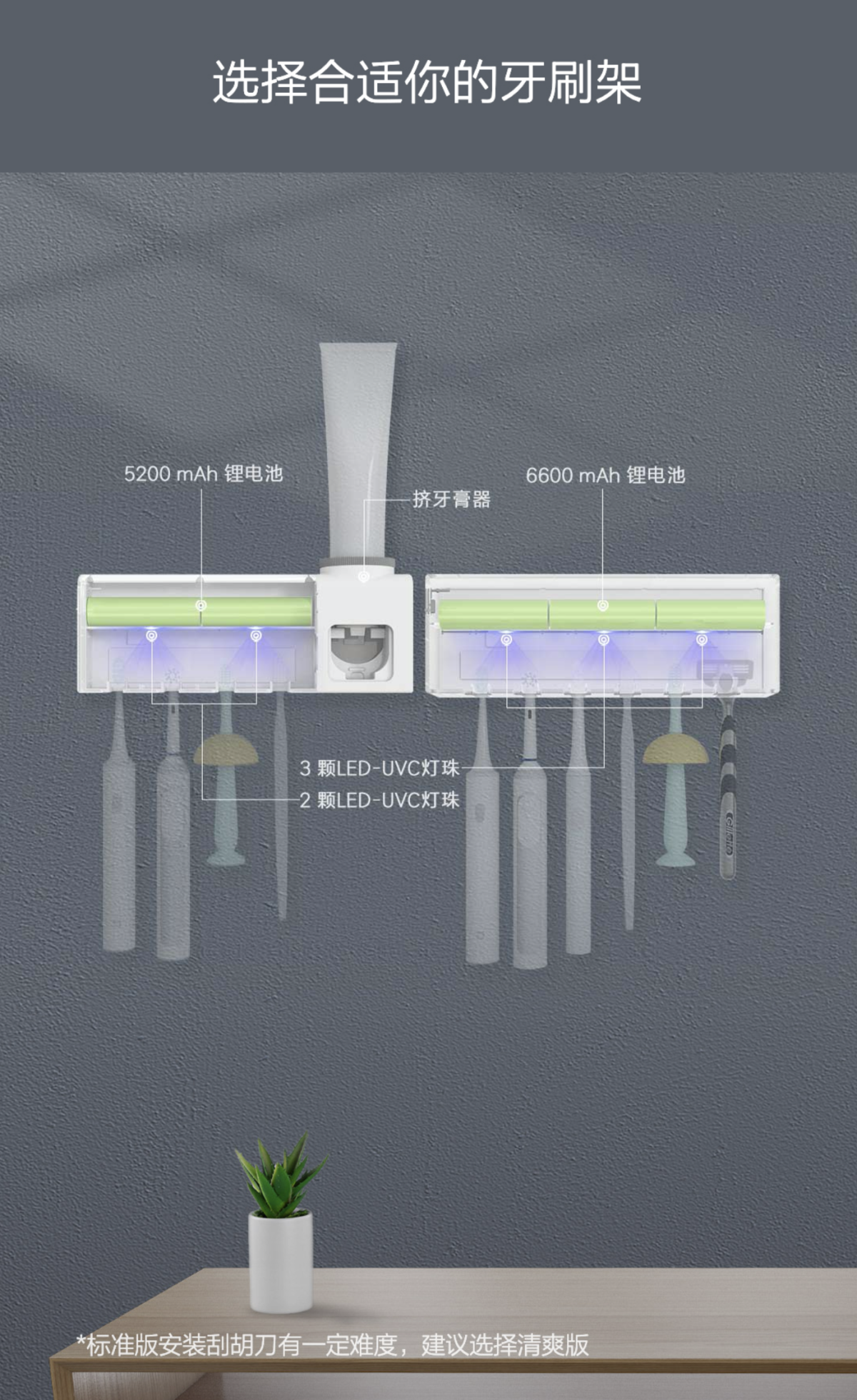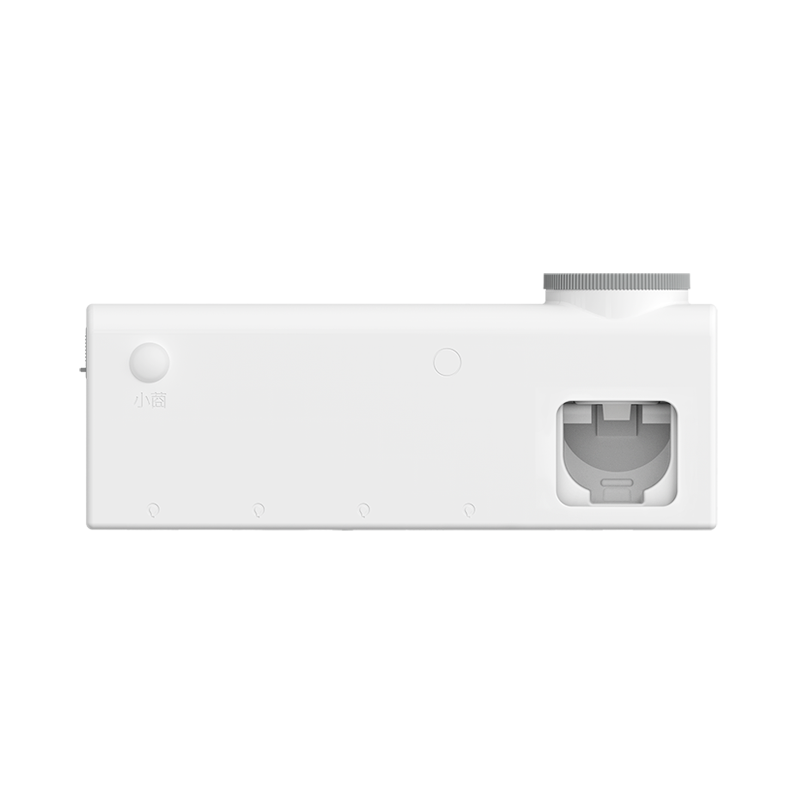Ultraviolet (UV) is an electromagnetic wave with a wavelength between 10nm and 400nm. The wavelength is shorter than visible light but longer than X-rays. The meaning of the name is "beyond purple", and purple is the shortest wavelength among the colors in visible light. Ultraviolet light has a shorter wavelength than violet light.
In 1801, German physicists discovered ultraviolet light, and since then ultraviolet light has been widely used.
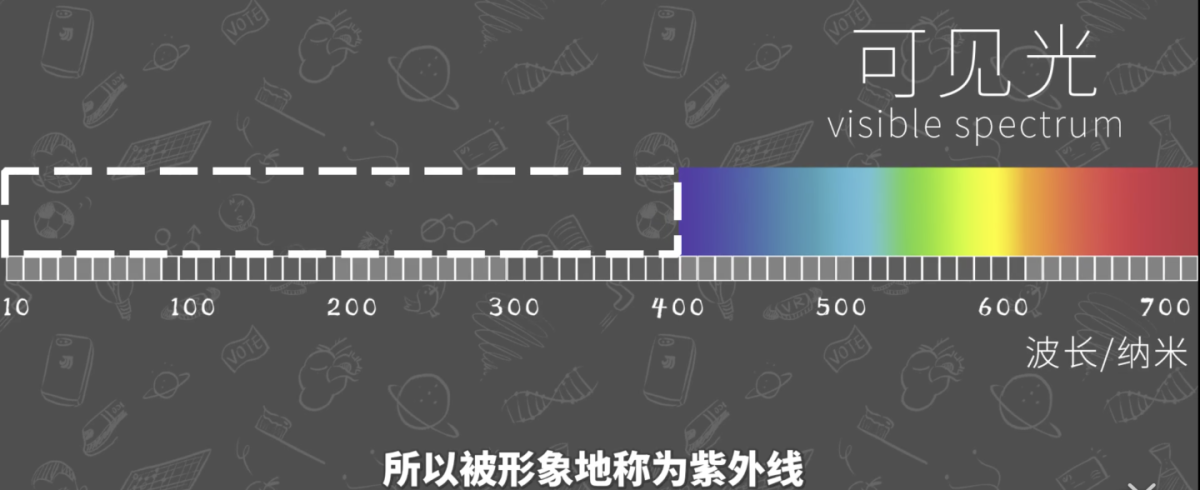
Types of UV
Ultraviolet rays can be divided into three types: UVA (ultraviolet A, wavelength 320-400 nanometers, long wave), UVB (wavelength 280-320 nanometers, medium wave), and UVC (wavelength 100-280 nanometers, short wave).
Ultraviolet A (UVA): Longer wavelength, between 320-400 nanometers, can penetrate clouds, glass into indoors and cars, and can penetrate into the dermis of the skin, causing sunburn.
Ultraviolet B (UVB): The wavelength is in the middle, the wavelength is between 280~320 nanometers, which will be absorbed by the [ozone layer], which can cause sunburn and skin redness, swelling, heat and pain. In severe cases, blisters or peeling (similar to burning) Symptoms of burns).
Ultraviolet C (UVC): The wavelength is between 100 and 280 nanometers, but because the wavelength below 200 nanometers is vacuum ultraviolet, it can be absorbed by the air, so the wavelength of ultraviolet C (UVC) that can penetrate the atmosphere is between 200 and 280 nanometers. The shorter the wavelength, the more dangerous it is, but because it can be blocked by the [ozone layer], only a small amount will reach the surface of the earth.
Ultraviolet rays can be divided into three types: UVA (ultraviolet A, wavelength 320-400 nanometers, long wave), UVB (wavelength 280-320 nanometers, medium wave), and UVC (wavelength 100-280 nanometers, short wave).
Ultraviolet A (UVA): Longer wavelength, between 320-400 nanometers, can penetrate clouds, glass into indoors and cars, and can penetrate into the dermis of the skin, causing sunburn.
Ultraviolet B (UVB): The wavelength is in the middle, the wavelength is between 280~320 nanometers, which will be absorbed by the [ozone layer], which can cause sunburn and skin redness, swelling, heat and pain. In severe cases, blisters or peeling (similar to burning) Symptoms of burns).
Ultraviolet C (UVC): The wavelength is between 100 and 280 nanometers, but because the wavelength below 200 nanometers is vacuum ultraviolet, it can be absorbed by the air, so the wavelength of ultraviolet C (UVC) that can penetrate the atmosphere is between 200 and 280 nanometers. The shorter the wavelength, the more dangerous it is, but because it can be blocked by the [ozone layer], only a small amount will reach the surface of the earth.

Characteristics of UVC ultraviolet sterilization
UVC ultraviolet rays, also known as "far ultraviolet rays", "short-wave ultraviolet C light", and another name: "bactericidal ultraviolet radiation".
Among the various wavelengths of ultraviolet light, only short-wave ultraviolet UVC has the sterilization and disinfection effect. It has the characteristics of broad-spectrum, high-efficiency, rapid and thorough, no need to add chemicals, no drug resistance, and no secondary pollution.
High-efficiency sterilization: The sterilization effect of ultraviolet rays on bacteria and viruses is generally completed within a few seconds, almost instantaneously, and the sterilization and disinfection capacity is 600 to 3000 times greater than that of chlorine.
Broad-spectrum sterilization: UV technology has the highest broad-spectrum sterilization among all current sterilization technologies. It can kill almost all bacteria and viruses with high efficiency.
More thorough sterilization: the combined use of ultraviolet rays and ozone (UVC+O3) can exert a more powerful and thorough sterilization power. Ultraviolet rays irradiate the air and the surface of the object in a straight line to achieve strong sterilization; ozone penetrates into all corners of the room with the air to completely kill indoor bacteria.
Complete environmental protection: The ultraviolet light emits ultraviolet rays for sterilization and disinfection. The ultraviolet rays irradiate the oxygen in the air to generate ozone, and the ozone is strongly oxidized to kill bacteria and viruses. The entire sterilization process does not need to add any chemicals, truly achieving complete environmental protection.
There is no drug resistance: ultraviolet rays or ozone directly destroy the DNA, RNA, protein, etc. in the bacterial virus cell, causing the cell to die directly and unable to reproduce, and there is no drug resistance. The sterilization of other chemical agents will cause the bacteria and viruses to become resistant, and the sterilization effect of the chemical agent will be invalid.
No secondary pollution: Ultraviolet rays and ozone cause the direct death of bacteria and viruses without any other chemical pollutants; meanwhile, ozone is converted into oxygen at room temperature for 15-30 minutes (ozone half-life) without any residual secondary pollution.
UVC ultraviolet rays, also known as "far ultraviolet rays", "short-wave ultraviolet C light", and another name: "bactericidal ultraviolet radiation".
Among the various wavelengths of ultraviolet light, only short-wave ultraviolet UVC has the sterilization and disinfection effect. It has the characteristics of broad-spectrum, high-efficiency, rapid and thorough, no need to add chemicals, no drug resistance, and no secondary pollution.
High-efficiency sterilization: The sterilization effect of ultraviolet rays on bacteria and viruses is generally completed within a few seconds, almost instantaneously, and the sterilization and disinfection capacity is 600 to 3000 times greater than that of chlorine.
Broad-spectrum sterilization: UV technology has the highest broad-spectrum sterilization among all current sterilization technologies. It can kill almost all bacteria and viruses with high efficiency.
More thorough sterilization: the combined use of ultraviolet rays and ozone (UVC+O3) can exert a more powerful and thorough sterilization power. Ultraviolet rays irradiate the air and the surface of the object in a straight line to achieve strong sterilization; ozone penetrates into all corners of the room with the air to completely kill indoor bacteria.
Complete environmental protection: The ultraviolet light emits ultraviolet rays for sterilization and disinfection. The ultraviolet rays irradiate the oxygen in the air to generate ozone, and the ozone is strongly oxidized to kill bacteria and viruses. The entire sterilization process does not need to add any chemicals, truly achieving complete environmental protection.
There is no drug resistance: ultraviolet rays or ozone directly destroy the DNA, RNA, protein, etc. in the bacterial virus cell, causing the cell to die directly and unable to reproduce, and there is no drug resistance. The sterilization of other chemical agents will cause the bacteria and viruses to become resistant, and the sterilization effect of the chemical agent will be invalid.
No secondary pollution: Ultraviolet rays and ozone cause the direct death of bacteria and viruses without any other chemical pollutants; meanwhile, ozone is converted into oxygen at room temperature for 15-30 minutes (ozone half-life) without any residual secondary pollution.

Application of UVC ultraviolet rays
Ultraviolet disinfection has a wide range of uses, such as hospitals, schools, nurseries, cinemas, buses, offices, and homes. In public places, ultraviolet disinfection can prevent some germs from spreading through the air or through the surface of objects. Especially in the current epidemic environment, the rational application of UVC disinfection and sterilization can help strengthen protection.
The smart disinfection toothbrush holder of Xiao Nian uses UVC ultraviolet rays to surround and sterilize. It is environmentally friendly and non-toxic, cares for health, and effectively inhibits the growth of toothbrush bacteria.
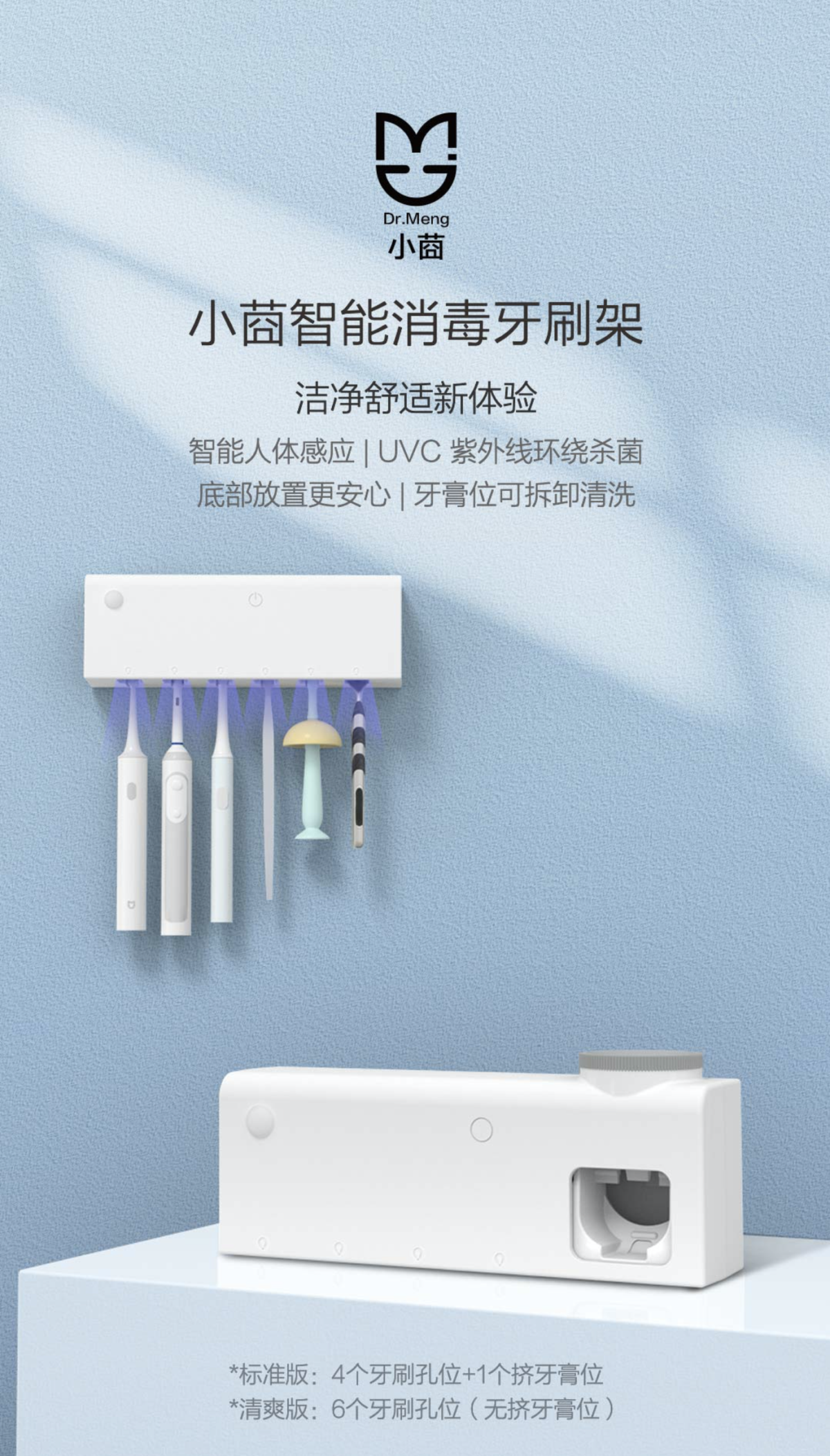
Guangdong Province Microbiological Analysis and Testing Center test report, report number: 2019FM14711R01
Guangzhou Zhongke Testing Technology Service Co., Ltd. No.: JKK20070113

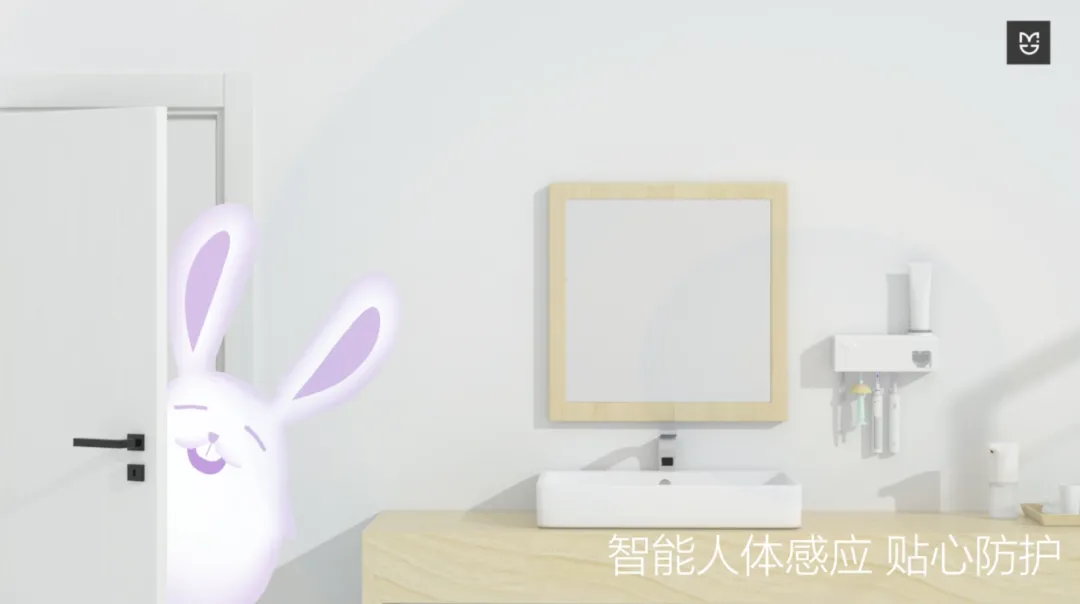
Intelligent infrared human body sensor, pregnant women, infants and pets can use it at ease. When the red light is on, a person is sensed, and one minute after the person leaves, it is automatically disinfected. Non-inductive disinfection design, without excessive attention, restore casual life.
While ultraviolet radiation kills bacteria and viruses, its radiation also harms human skin and eyes. Therefore, when using ultraviolet sterilization, care should be taken to ensure safety.
The Smart Disinfection Toothbrush Holder is designed to place the toothbrush from the bottom up from the bottom, which is different from being placed in the front direction to avoid direct-viewing of ultraviolet rays to the eyes and more effectively avoid light pollution.
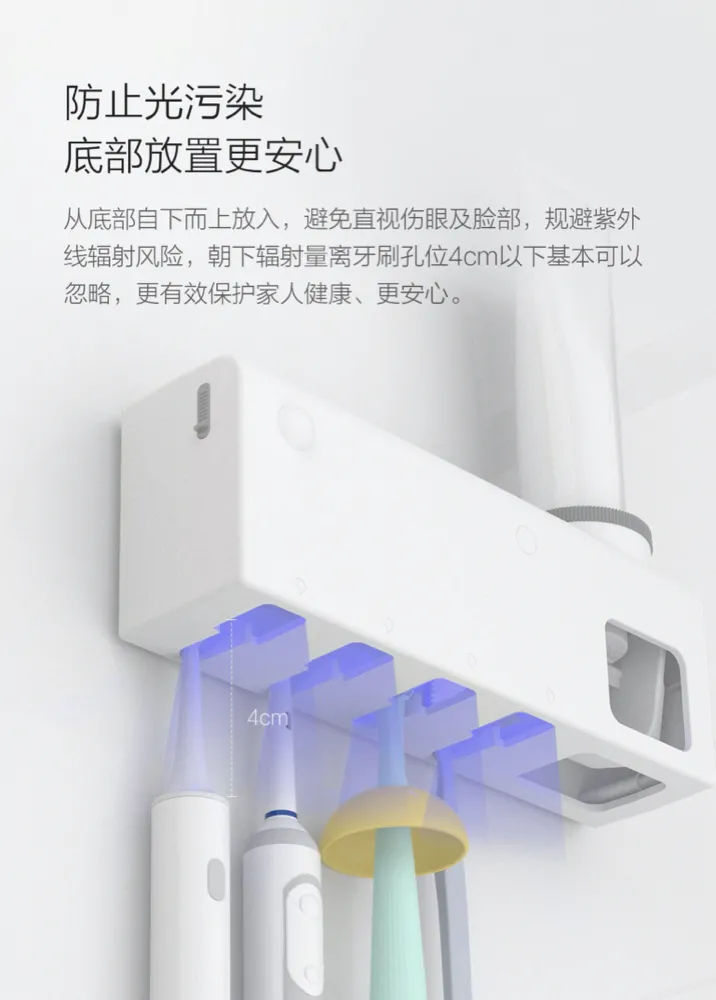
CE certificate number: WY-E19090181 ROHS
Certificate number: WY-R19090183
FCC certificate number: WY-E19090182
